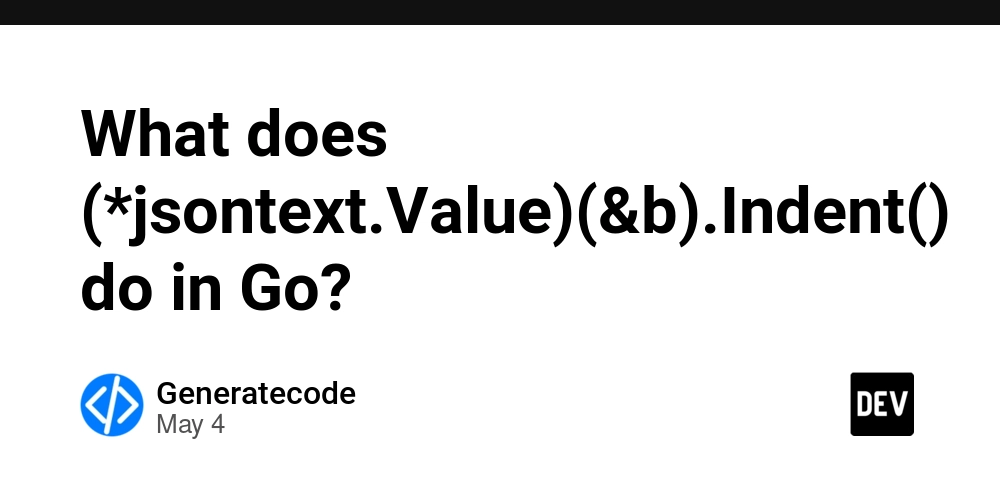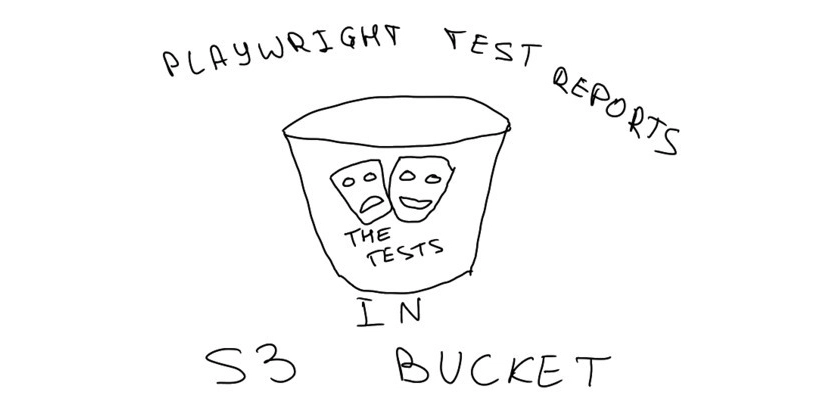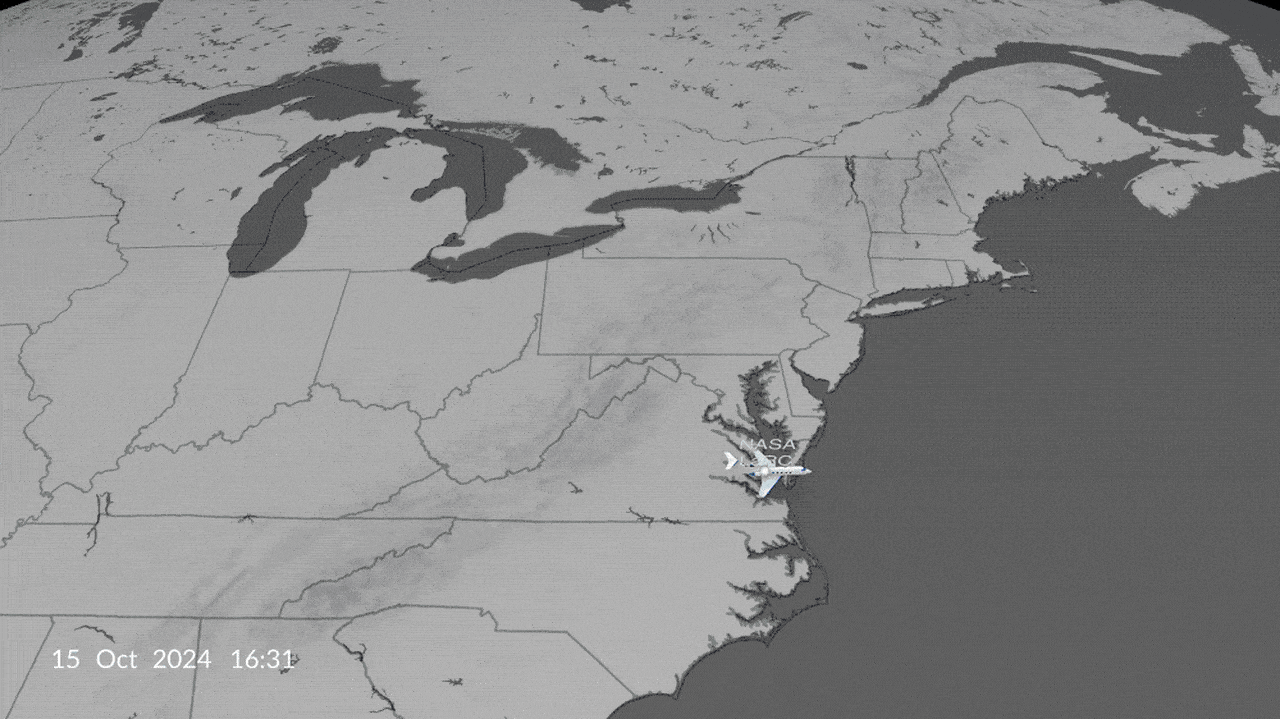What does (*jsontext.Value)(&b).Indent() do in Go?
When working with Go, handling JSON data is a common task. In the code snippet you're referring to, we see the use of a specific method: (*jsontext.Value)(&b).Indent(). This can be a bit confusing for those who are new to Go or JSON manipulation. So let’s break it down. Understanding JSON Marshaling in Go In Go, the encoding/json package is typically used to encode and decode JSON. In your example, b, _ := json.Marshal(output) marshals the output variable into a JSON byte slice b. The underscore _ is used to ignore any errors that may occur during marshaling. This is often a pattern when we are confident that there won't be an error or we want to handle it later. What is *jsontext.Value? The section (*jsontext.Value)(&b).Indent() involves a couple of key components. First, jsontext.Value is likely a type defined in the github.com/go-json-experiment/json package. The Value type is likely a structure that represents JSON values in a more manageable form. Casting with (*jsontext.Value)(&b) Dereferencing and Type Conversion: The expression (*jsontext.Value)(&b) performs type conversion. Here, &b takes the address of the byte slice b, and (*jsontext.Value)(...) casts this pointer to the appropriate Value type. This means we are creating a Value type pointer from the byte slice containing JSON data. The * indicates that we are dereferencing it, making it easy to access its methods and properties. The Role of Indent() The method Indent() is a method defined on the jsontext.Value type. Its purpose is to format the JSON data for improved readability. When called, it modifies the internal representation of the JSON, adding indentation and line breaks to structure it better visually. This is particularly useful for debugging or logging the contents of a JSON object, making it easier to comprehend. The Complete Example of Using the Code To better illustrate its use, let’s look at a complete example in context: package main import ( "encoding/json" "fmt" "github.com/go-json-experiment/json" ) func main() { output := map[string]string{"name": "John", "age": "30"} b, _ := json.Marshal(output) jsonValue := (*jsontext.Value)(&b) jsonValue.Indent() // Format the JSON for readable output fmt.Println(string(b)) } In this example: We define a simple map as output, which will be marshaled to JSON. We call *(jsontext.Value)(&b).Indent() to format our JSON structure properly before printing. Finally, we output the string representation of our formatted JSON, allowing us to see its structure clearly. Frequently Asked Questions What is JSON marshaling in Go? JSON marshaling is the process of converting Go objects (like structs) into JSON format using the encoding/json package. Why would I need to format JSON? Formatting JSON with indentation improves readability, which is helpful when you’re debugging or logging JSON data. Can I omit the error handling in Go? While it’s common to ignore the error with _, it’s often better to handle errors unless you are certain they won't occur. This ensures robustness in your code. Conclusion In conclusion, the (*jsontext.Value)(&b).Indent() command in your Go code serves an important purpose in formatting JSON data into a human-readable format. Understanding casting and method usage proves beneficial when you navigate complex libraries or frameworks in Go. By incorporating these key insights, you can handle JSON in your application more effectively and create cleaner, more maintainable code.

When working with Go, handling JSON data is a common task. In the code snippet you're referring to, we see the use of a specific method: (*jsontext.Value)(&b).Indent(). This can be a bit confusing for those who are new to Go or JSON manipulation. So let’s break it down.
Understanding JSON Marshaling in Go
In Go, the encoding/json package is typically used to encode and decode JSON. In your example, b, _ := json.Marshal(output) marshals the output variable into a JSON byte slice b. The underscore _ is used to ignore any errors that may occur during marshaling. This is often a pattern when we are confident that there won't be an error or we want to handle it later.
What is *jsontext.Value?
The section (*jsontext.Value)(&b).Indent() involves a couple of key components. First, jsontext.Value is likely a type defined in the github.com/go-json-experiment/json package. The Value type is likely a structure that represents JSON values in a more manageable form.
Casting with (*jsontext.Value)(&b)
-
Dereferencing and Type Conversion: The expression
(*jsontext.Value)(&b)performs type conversion. Here,&btakes the address of the byte sliceb, and(*jsontext.Value)(...)casts this pointer to the appropriateValuetype. -
This means we are creating a
Valuetype pointer from the byte slice containing JSON data. The*indicates that we are dereferencing it, making it easy to access its methods and properties.
The Role of Indent()
The method Indent() is a method defined on the jsontext.Value type. Its purpose is to format the JSON data for improved readability. When called, it modifies the internal representation of the JSON, adding indentation and line breaks to structure it better visually. This is particularly useful for debugging or logging the contents of a JSON object, making it easier to comprehend.
The Complete Example of Using the Code
To better illustrate its use, let’s look at a complete example in context:
package main
import (
"encoding/json"
"fmt"
"github.com/go-json-experiment/json"
)
func main() {
output := map[string]string{"name": "John", "age": "30"}
b, _ := json.Marshal(output)
jsonValue := (*jsontext.Value)(&b)
jsonValue.Indent() // Format the JSON for readable output
fmt.Println(string(b))
}
In this example:
- We define a simple map as
output, which will be marshaled to JSON. - We call
*(jsontext.Value)(&b).Indent()to format our JSON structure properly before printing. - Finally, we output the string representation of our formatted JSON, allowing us to see its structure clearly.
Frequently Asked Questions
What is JSON marshaling in Go?
JSON marshaling is the process of converting Go objects (like structs) into JSON format using the encoding/json package.
Why would I need to format JSON?
Formatting JSON with indentation improves readability, which is helpful when you’re debugging or logging JSON data.
Can I omit the error handling in Go?
While it’s common to ignore the error with _, it’s often better to handle errors unless you are certain they won't occur. This ensures robustness in your code.
Conclusion
In conclusion, the (*jsontext.Value)(&b).Indent() command in your Go code serves an important purpose in formatting JSON data into a human-readable format. Understanding casting and method usage proves beneficial when you navigate complex libraries or frameworks in Go. By incorporating these key insights, you can handle JSON in your application more effectively and create cleaner, more maintainable code.





































































































































































![[The AI Show Episode 145]: OpenAI Releases o3 and o4-mini, AI Is Causing “Quiet Layoffs,” Executive Order on Youth AI Education & GPT-4o’s Controversial Update](https://www.marketingaiinstitute.com/hubfs/ep%20145%20cover.png)






























































































































![[DEALS] Microsoft 365: 1-Year Subscription (Family/Up to 6 Users) (23% off) & Other Deals Up To 98% Off – Offers End Soon!](https://www.javacodegeeks.com/wp-content/uploads/2012/12/jcg-logo.jpg)


![From Art School Drop-out to Microsoft Engineer with Shashi Lo [Podcast #170]](https://cdn.hashnode.com/res/hashnode/image/upload/v1746203291209/439bf16b-c820-4fe8-b69e-94d80533b2df.png?#)




















![Re-designing a Git/development workflow with best practices [closed]](https://i.postimg.cc/tRvBYcrt/branching-example.jpg)




















































































(1).jpg?#)
































_Inge_Johnsson-Alamy.jpg?width=1280&auto=webp&quality=80&disable=upscale#)































































































![The Material 3 Expressive redesign of Google Clock leaks out [Gallery]](https://i0.wp.com/9to5google.com/wp-content/uploads/sites/4/2024/03/Google-Clock-v2.jpg?resize=1200%2C628&quality=82&strip=all&ssl=1)
![What Google Messages features are rolling out [May 2025]](https://i0.wp.com/9to5google.com/wp-content/uploads/sites/4/2023/12/google-messages-name-cover.png?resize=1200%2C628&quality=82&strip=all&ssl=1)














![New Apple iPad mini 7 On Sale for $399! [Lowest Price Ever]](https://www.iclarified.com/images/news/96096/96096/96096-640.jpg)
![Apple to Split iPhone Launches Across Fall and Spring in Major Shakeup [Report]](https://www.iclarified.com/images/news/97211/97211/97211-640.jpg)
![Apple to Move Camera to Top Left, Hide Face ID Under Display in iPhone 18 Pro Redesign [Report]](https://www.iclarified.com/images/news/97212/97212/97212-640.jpg)
![Apple Developing Battery Case for iPhone 17 Air Amid Battery Life Concerns [Report]](https://www.iclarified.com/images/news/97208/97208/97208-640.jpg)







































































































